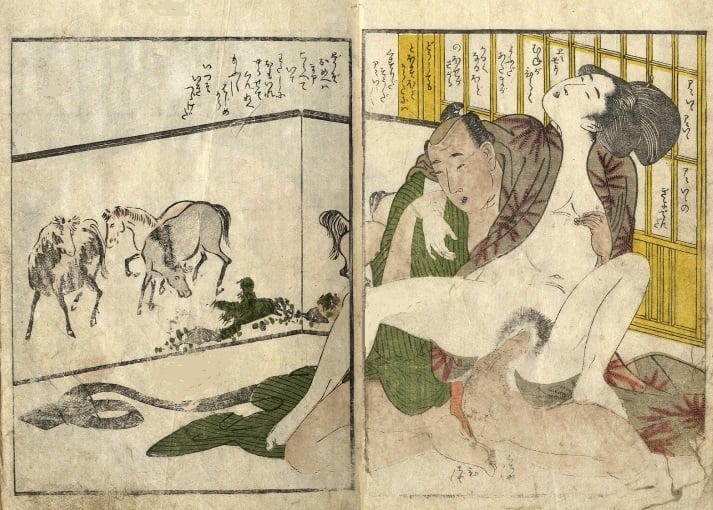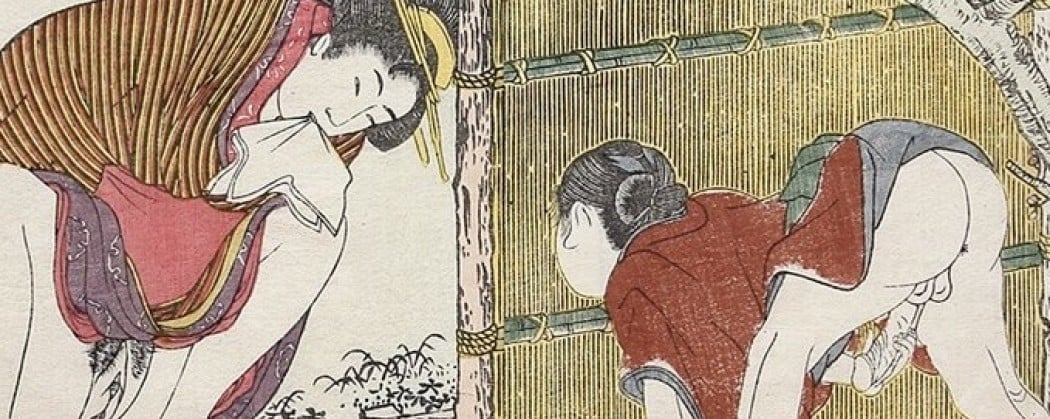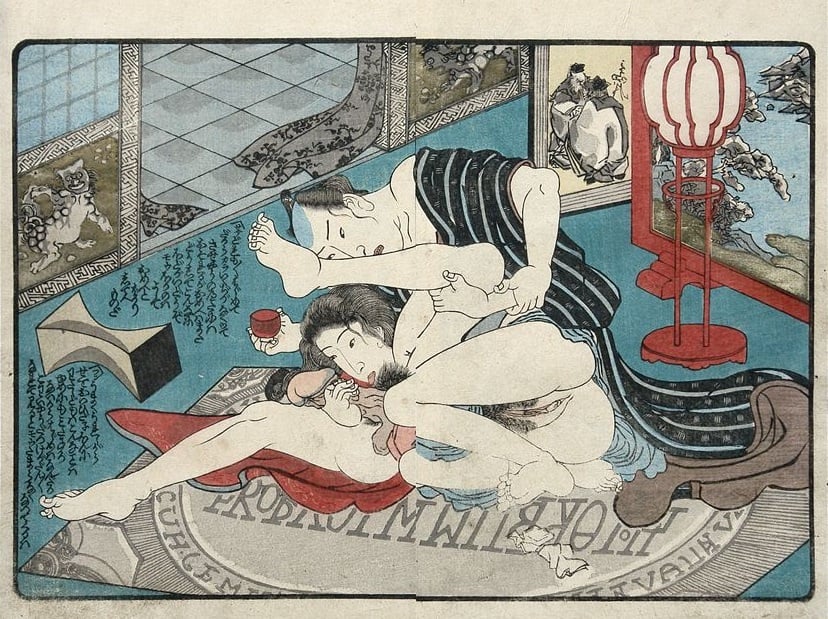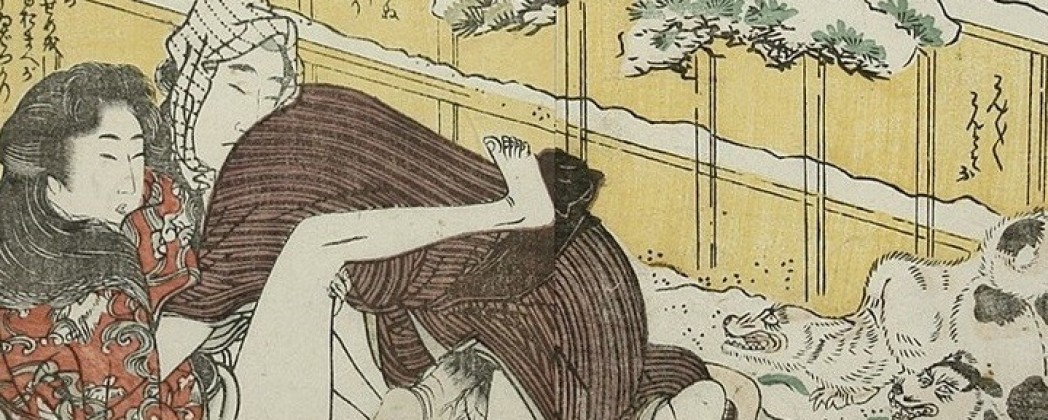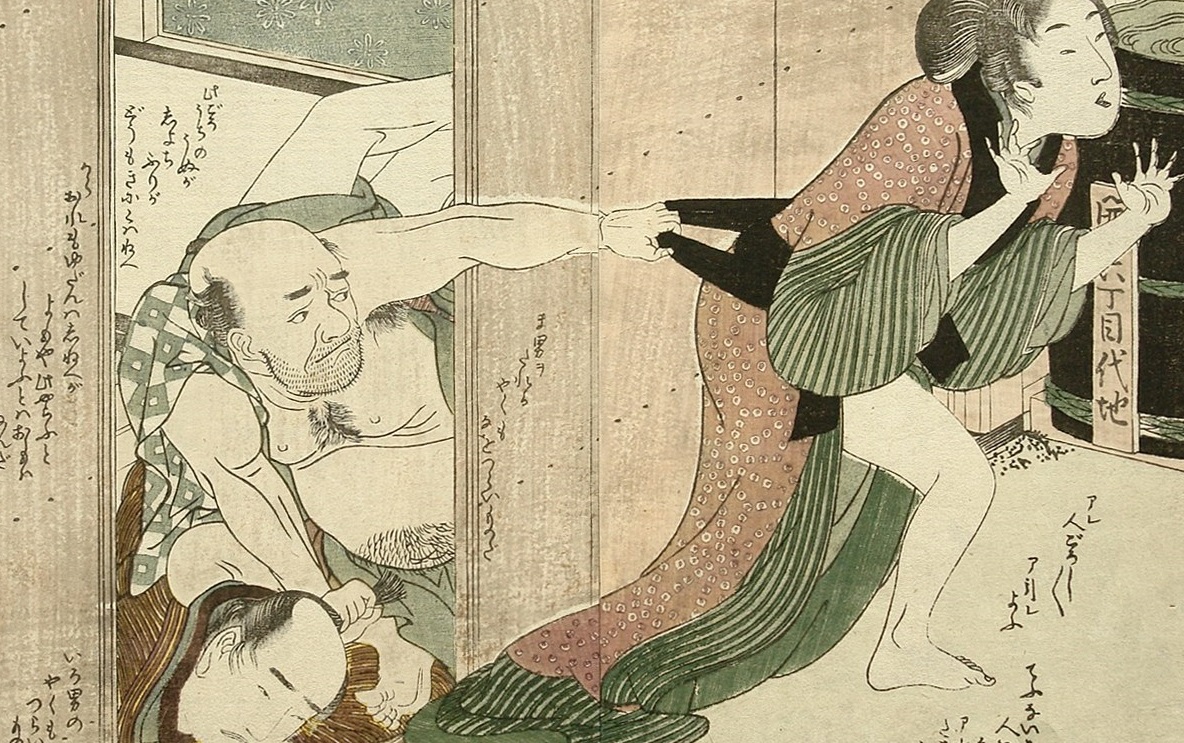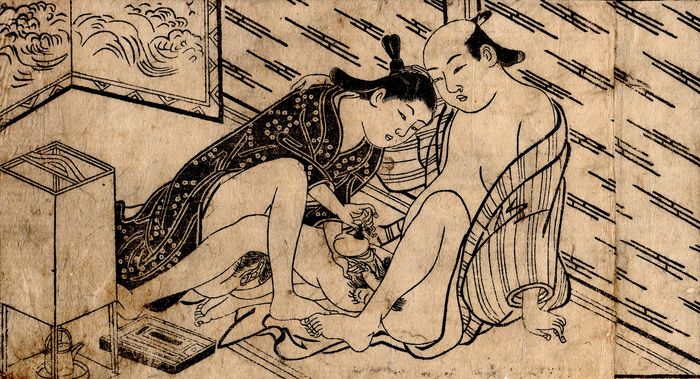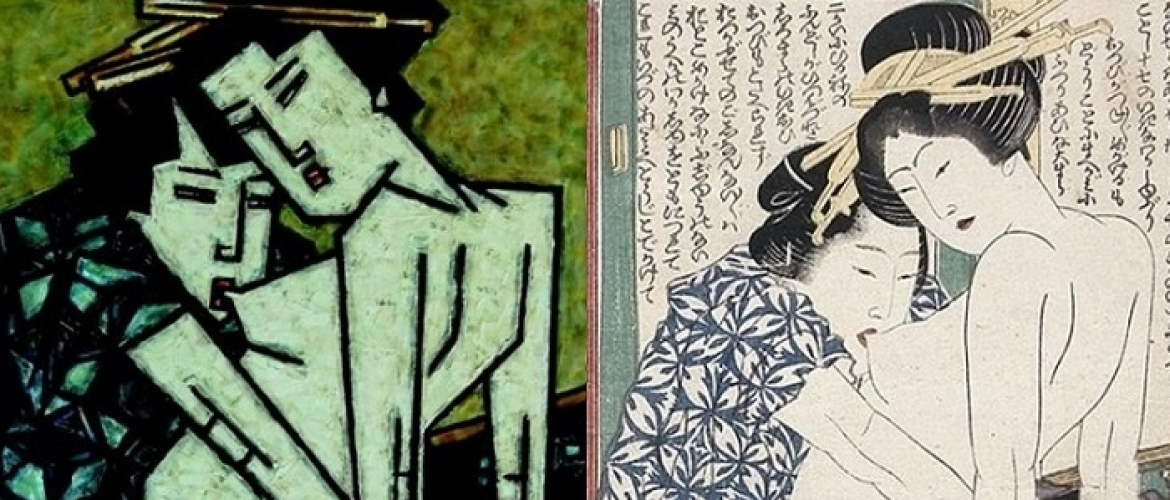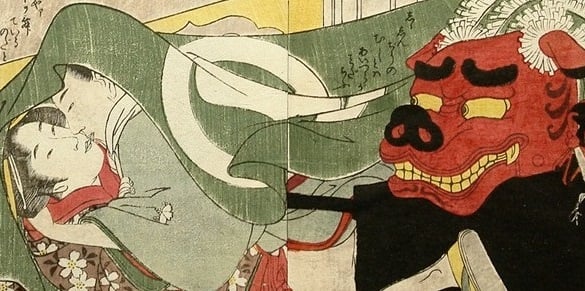
Kitagawa Utamaro (1753-1806) is among the five greatest ukiyo-e masters. His refined portrayal of female beauty is virtually unmatched. At the end of his career his work suffered from an artistic decline except for the shunga genre in which he excelled until his death in 1806.
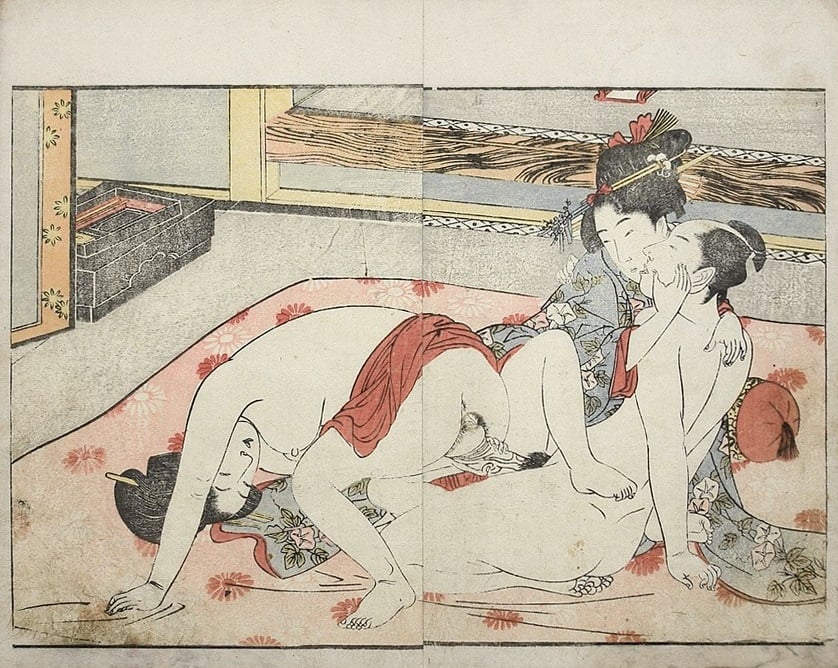
Fig.1. ‘Threesome‘ (c.1802) from the series ‘Ehon karanishiki (Picture-Book of the Chinese Brocade)‘ by Kitagawa Utamaro
Utamaro‘s life and career are closely linked with those of Tsutaya Juzaburo (1750-1797), who was the most influential publisher of his time. He was responsible for Utamaro‘s success and accompanied him on his visits to the pleasure quarters to find consistent artistic inspiration. They were so close that it is assumed that Utamaro also lived in the house of his patron.

Fig.2. ‘Naked orgy‘ (c.1805) from the series ‘Ehon takara gura (Treasure Room of Love)‘ by Kitagawa Utamaro
Another regular guest in Tsutaya’s home was Kitao Masanobu, who was one of the most fascinating figures in the cultural and social circles of the day. From him Utamaro took over a sense of visual grandeur and possibly also some of his lifestyle. But his main inspiration was his rival Kiyonaga who challenged him to develop his own style.
The year 1788 was an important year in Utamaro‘s artistic life. After the successful publication of his famous ‘Picture Book: Selected Insects (Ehon mushi erabi)‘ he was able to free himself from outside influences and became the rising star of the art of the Floating World. He became the undeniable leader in the portrayal of female beauty.

Fig.3. ‘Festival mask‘ (c.1805) from the series ‘Ehon takara gura (Treasure Room of Love)‘ by Kitagawa Utamaro
In the same year Utamaro also produced the most famous shunga album in the history of Japanese art the ‘Poem of the Pillow (Utamakura)‘. It is outstanding for its technical brilliance of the engraving and the extraordinary quality of the colours. It exposes his greatness as an artist, portraying a mixture of subjects (such as the Dutch couple) and settings, all of them taking an unprecedented level and degree of intensity, the capacity to express passionate feelings and the conception of the human figure, particularly that of the female body.
Tenderness
The tenth sheet of the set is the most famous one. It shows the interior of a pleasure house where, in an upstairs room opening on to a garden from which the upper branches of a camellia are visible, a couple are embracing, just before sexual intercourse. The elegant, flowing lines define the kimono, the high-quality printing imbues the textiles with a transparency, and a sense of tenderness between the couple is created by the woman’s hand as she directs her lover towards her.

Fig.4. ‘Mirror‘ (c.1802) from the series ‘Series‘Ehon karanishiki (Picture-Book of the Chinese Brocade)’ by Kitagawa Utamaro
Self-portrait of Utamaro
An artist, his drawing tools and the painting he is working on behind him, is making love to a woman who is observing herself in the mirror. Some critics have suggested that the male figure in the above print (Fig.4.) is a self-portrait of Utamaro (there’s another self-portrait that is definitely authentic which carries a similar inscription). Others have suggested that the portrait is of Tsutaya, since there is a symbol of the ivy (tsuta) crest on the kimono’s shoulder.
Horses
A lovely design with the intimate couple placed on the right of the composition as if they are being watched by the horses on the screen. The metallic pigment used for the flesh tones of the skin of the man has since oxidized, imbuing the figure with texture.
Utamaro‘s other important contributions to the shunga genre are the ‘Picture Book: Embracing Komachi (Ehon Komachibiki)‘, published in 1802, the three volume book series ‘Picture Book: The Laughing Drinker (Ehon warai jogo)‘, published c. 1803, ‘Picture-Book of the Chinese Brocade (Ehon karanishiki)‘, published c.1802 and ‘Treasure Room of Love (Ehon takara gura)‘, published in 1805 (see also Fig.2 and 3).
Click here for rare original Utamaro shunga prints for sale…!!!

